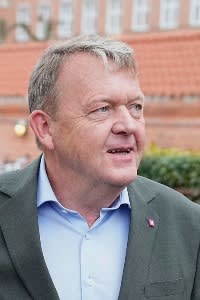Denmark’s ruling centre-left set to lose majority after election
Denmark’s ruling centre-left bloc looked set to lose its majority and could be dependent on a new party founded by a former centre-right prime minister to stay in power, according to the first exit polls for parliamentary elections.
Social Democrat prime minister Mette Frederiksen and her leftwing bloc were projected to win 85-86 seats while the rightwing bloc led by the Liberals was in line to take 72-73, according to exit polls from broadcasters DR and TV2 on Tuesday night.
But neither side looks likely to gain a majority of 90 seats in parliament because of a new centrist party led by former prime minister Lars Løkke Rasmussen. He is on the verge of becoming kingmaker able to support either the left or right. Exit polls gave his Moderates party about 9 per cent, or 16-17 seats.
Frederiksen is widely regarded as Denmark’s most powerful prime minister and gained plaudits for decisive action during the Covid-19 pandemic. She was forced to call early elections by a parliamentary ally who criticised her handling of a botched cull of up to 17mn mink last year.
No fewer than 14 parties are seeking entry to parliament from Denmark — with four more groups likely to come from the Faroe Islands and Greenland — leading to one of the most fragmented political landscapes in Europe.
Up until now, Danish politics have stuck to separate left- and rightwing blocs. But both Frederiksen and Rasmussen have said they would like to see a centrist government involving the main parties from both the left and right in an attempt to minimise the influence of smaller parties, particularly on the extremes.
“It could be a new way of doing things. We’ve never had so much talk about this middle ground and finding compromises in the middle. This is a very interesting evening in Danish politics,” former Social Democrat prime minister Helle Thorning-Schmidt told the Financial Times.

Experts said it was likely to take longer than normal to form a new government because of several new parties emerging. Frederiksen moved her Social Democrats sharply to the right on issues such as migration, which has caused support for the populist Danish People’s party to collapse.
The second most popular party in 2015, when one in five Danes backed the People’s party, it was set to poll only just above the 2 per cent threshold needed to enter parliament this time, their worst result.
The party has been usurped by a number of new groups including the New Right and the Denmark Democrats, headed by a former immigration minister, Inger Støjberg. Exit polls gave the Denmark Democrats about 7 per cent and the New Right about 4 per cent.
Frederiksen argued on the campaign trail that Danes, faced with deteriorating security in the Baltic Sea — including the alleged sabotage of the Nord Stream gas pipelines just outside Denmark’s territorial waters — as well as a dramatic increase in the cost of living, should back her crisis management skills.
But many, even on the left, believe she needs more checks and balances, perhaps through a broader coalition of parties, as she currently heads a one-party minority government.
The rightwing parties lost their one-time lead over the leftwing early in the campaign and have struggled with scandals surrounding one of their two prime minister candidates, the Conservative leader Søren Pape Poulsen.
Exit polls put the Social Democrats on 23-25 per cent, and the leading centre-right party the Liberals on about 14 per cent.
For all the latest Business News Click Here
For the latest news and updates, follow us on Google News.
